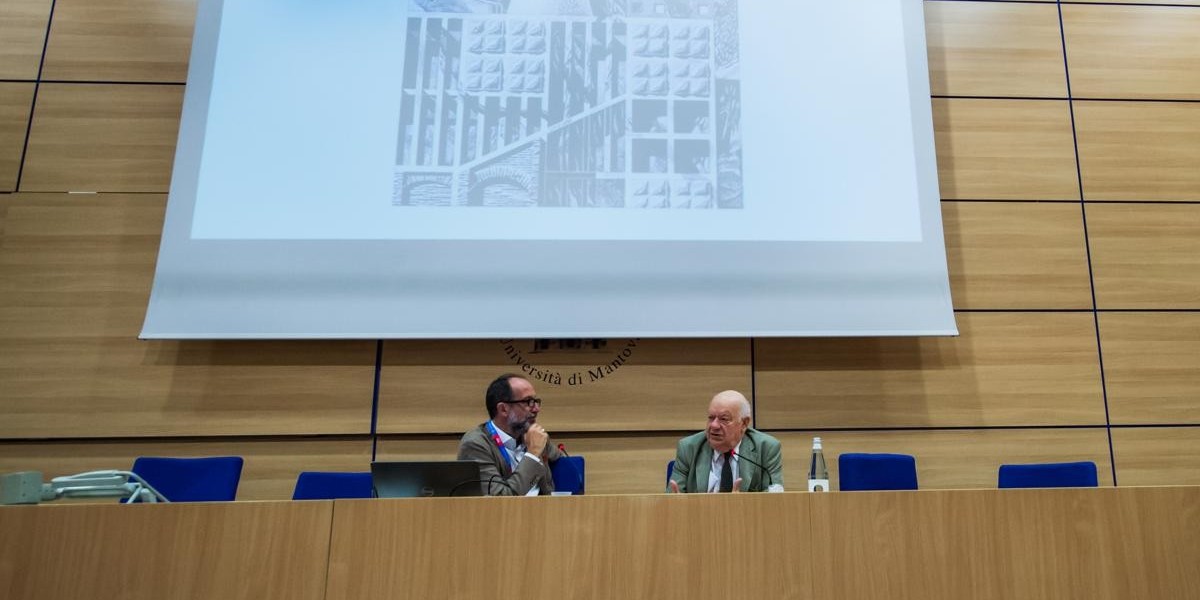
Writing architecture. In conversation with Franco Purini
Franco Purini, in the passionate introduction by Luca Molinari, is an all-round architect, a now rare figure in the contemporary context. And he writes about architecture. Architecture that becomes landscape. In Rome in the 1960s, Purini’s drawings became theory, theoretical works, real written works about architecture. In fact, drawing is a way of recounting, a conceptual dimension, a continuous quotation of literary places. Because literature has always nourished thinking about architecture.
And Purini remembers his teachers, Maurizio Sacripanti and Vittorio Gregotti (in addition to many others with whom he exchanged ideas over the years). Because it is always important to remember who -with a sentence, with a book, with a work - made us think. Purini decided to become an architect from an early age, especially after having seen the Tuscolano district grow. In new buildings (designed by De Renzi is Muratori ) happy families entered, who all went to see the others’ apartments. All this gave joy and architecture must help to bring about this happiness and speak only of happiness. The home must be open to space, to the city, it must be an artistic expression like poetry.
Today, however, architecture no longer tends to be thought of as art. But it is art, it is the construction of the awareness of a certain eternity of being, of the possibility of being, in spite of our mortality, somehow eternal, immortal. We are in the world, in the light, we enjoy the beauty in content that is always regenerated. Because the work is so vital that it defeats the passing of time and becomes an eternal presence. Purini took inspiration for all of this from works such as The Red and he Black by Stendhal and F Scott Fitzgerald’s The Great Gatsby, as well as from American cinema which inundated Italy in the immediate postwar period.
Because we must understand the customs of these arts, understand what makes a poem beautiful: it is the deep density, the clarity with which it is exposed. The clearer the language, the greater the mystery. Palladio has a solar rationality that is immediately understood, but this simplicity is transformed into profound mystery, immersed in a kind of magic that is to be understood. We find the cosmos, the universe in its constructions. The architecture must be of immediate rationality, hiding deeper and more fascinating internal texts. They then allow you to always produce happiness in beauty. One thing that contrasts with the multitude of unhappy people who, despite having gained the right to live in a home, live in ugly and therefore sad places.
This is also the meaning of architecture for Vitruvius: use, structure and beauty . You can not build a place where you are not happy, a place that does not work. Beauty is debatable, of course. “But rationality is not enough, if there is no emotion" (Le Corbusier). The act of construction must be sacred. Dobbiamo costruire edifici che è essenziale che ci siano. We must reach a transformative ideality. Buildings must speak to us, they must speak to the spirit with eternal, universal values. And always reminding us that the important thing is to try, always try.



